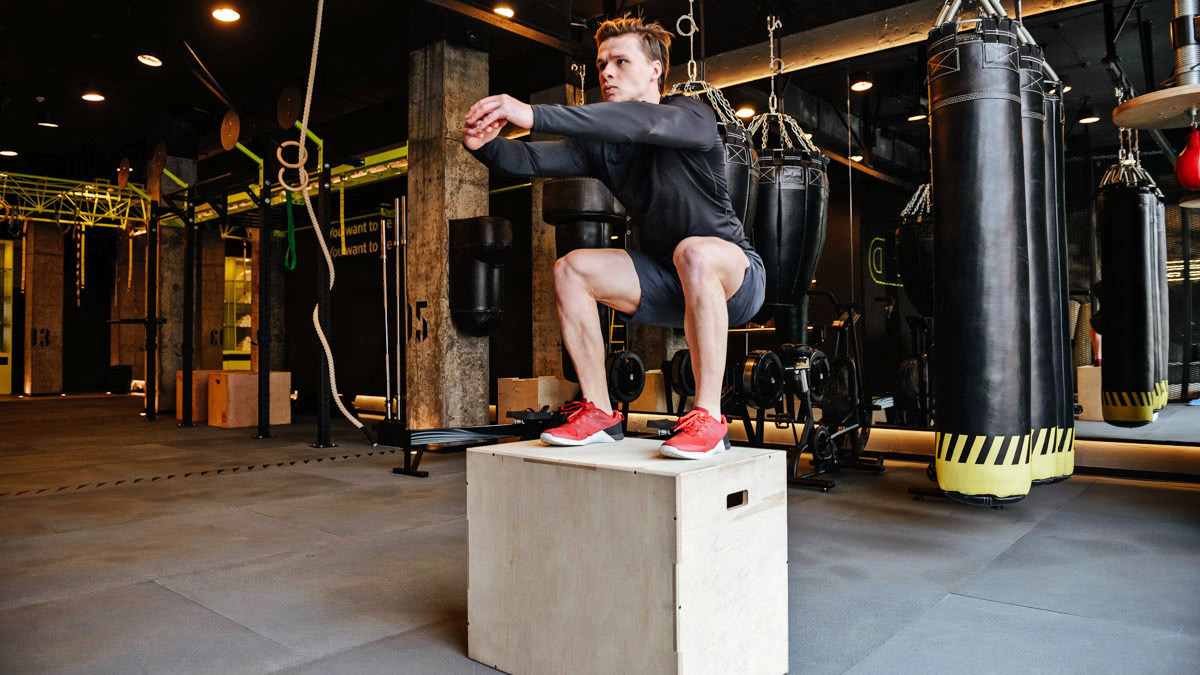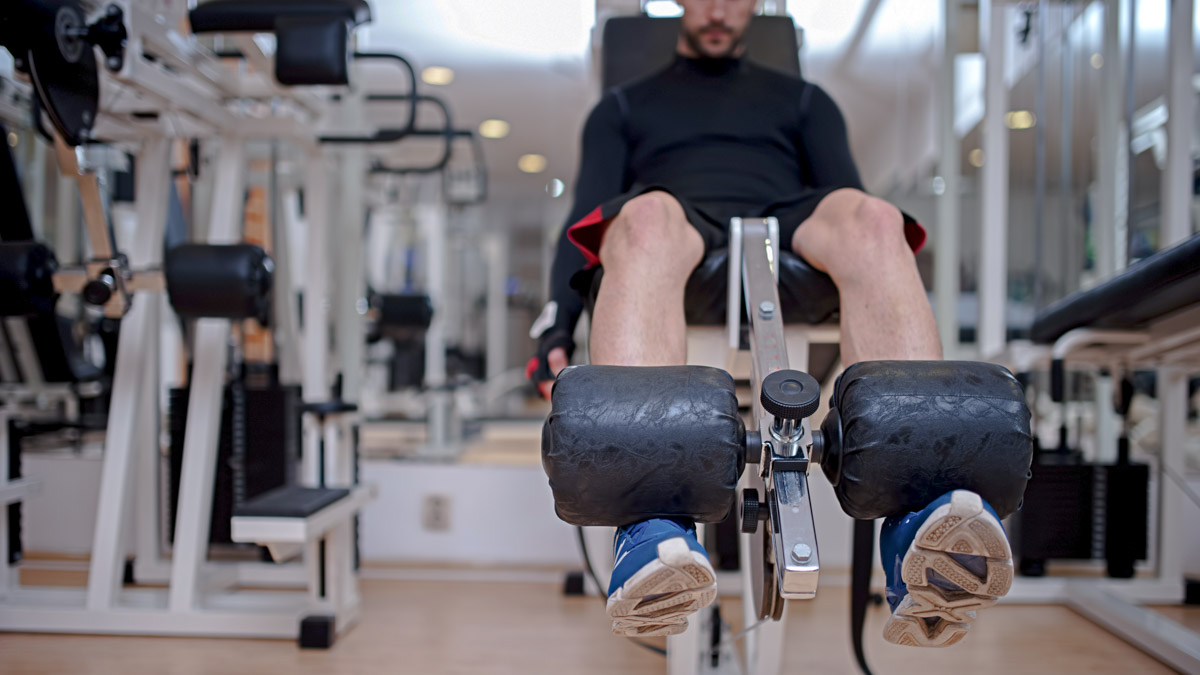We often think of plyometrics in terms of running faster and becoming more explosive, but did you know that because they force your ligaments, tendons, and bones to adapt, they also make your joints and supporting structures more resistant to injury? In this post, I’ll share four staple plyometric leg exercises that can help bulletproof your lower half.
Why Plyometric Exercises Can Help With Injury Prevention
The Soviet Olympic Committee was unquestionably guilty of systematic doping during the Cold War, but this often obscures the fact that they also produced several significant athletic innovations. These include periodization and a more strategic use of Olympic weightlifting and jump training. The latter eventually came to be called plyometrics, which is a combination of the Greek words plio (more) and metric (measure). Such movements live up to their name, increasing the distance that you can jump vertically and laterally, improving quickness, and boosting the size and power output of muscle fibers. You also learn to recruit more muscle faster and improve the skill of jumping in various directions.
An underrated benefit of jumping exercises is that they expose your connective tissues to high acute loads. Your body responds by creating more collagen, a building block of cartilage, tendons, the meniscus, and ligaments. This not only makes your supporting structures stronger so that you can improve jump speed and height or breadth but also prepares you for the rigors of running and whatever other sports you might participate in.
A contributing factor to both acute ligament and tendon injuries and nagging, chronic conditions such as runner’s knee, plantar fasciitis, and Achilles tendonitis is that the inflamed or torn tissues were not exposed to sufficient load to handle the rigors of your sport. As the old saying goes, an ounce of prevention is worth a pound of cure, and one way of reducing your incidence of such injuries is to include plyometrics a couple of times a week in your gym sessions. Do them after your warmup and before your strength and endurance work, as these types of training diminish power output.
Plyometric Leg Exercises to Start Now
Here are a few exercises to get you started. Pick two or three of these per workout, performing five sets of five reps of each with one to two minutes of rest between sets. If you find yourself slowing down or the quality of the exercise degrading, end the set early and try taking a longer break between sets.
1. Box Jumps
- Stand with your feet shoulder-width apart in front of a plyo box
- Drop into a quarter squat and swing your arms back
- Explode upward, extending your knees and swinging your arms forward and up
- Land on the box with both feet, keeping your abs tight so your torso stays upright
- Step back down (jumping down is a mistake that can increase the risk of an Achilles injury) and then repeat
2. Lateral Hops
- Stand with your feet shoulder-width apart and lift your left foot a few inches off the floor
- Bend your left knee into a quarter squat
- Jump to your right and land on the ball of your right foot, then tap your heel down. Make sure your right knee is partially bent so you don’t land stiff-legged.
- Hold the landing position for three to five seconds. This improves your ability to preserve lateral knee stability while moving dynamically.
- Repeat the movement on the other side
3. Squat Jumps
- Stand with your feet shoulder-width apart
- Go down into a full squat
- Once you reach the bottom position with your thighs parallel to the floor or below, swing your arms forward and upward, and leap as high as you can
- Land on the balls of both feet to cushion the impact, tap your heels, and repeat the jump
- You can perform this exercise as a superset (i.e., back-to-back with no breaks between exercises) after barbell or goblet squats
4. Lunge Jumps
- Stand with your feet shoulder-width apart
- Take a long step forward with your right foot. The forward (right) foot should be straight, while you’re on the toes of the back (left) foot. Keep your torso upright.
- As you get to the bottom of the lunge position, swing your arms forward and upward and leap into the air
- Switch legs midair so you land with your left foot forward and right foot back. Hold the landing position for three to five seconds to develop stability, and then repeat the jump.
- Once you master the movement, you can superset lunge jumps with weighted lunges (holding a medicine ball, weight plate, or dumbbells for the latter)
When you’ve become fluent in these basic plyometric exercises, you can add in variations that change the direction — like broad jumps instead of squat jumps — and add in countermovement, such as stepping down from a lower box and then leaping straight back up (aka, a depth jump) or hopping from side to side without breaks. Any explosive leaping movement is technically plyometric, so don’t be afraid to get creative. The key is keeping your body under control even as it’s moving quickly and ensuring that you stick a good, safe landing every time.
Also, avoid the temptation to do too much volume, as it doesn’t take more than five to 15 minutes a couple of times a week to prompt the injury-resisting, connective tissue-strengthening, power-building adaptations you’re seeking. If you’ve got pre-existing knee, ankle, or hip issues, try performing the exercises on grass or another soft surface. Sticking with plyometrics as part of your resistance training program will safeguard your joints, strengthen your ligaments and tendons, clear up niggling injuries, and help you do the sport you love for longer.








